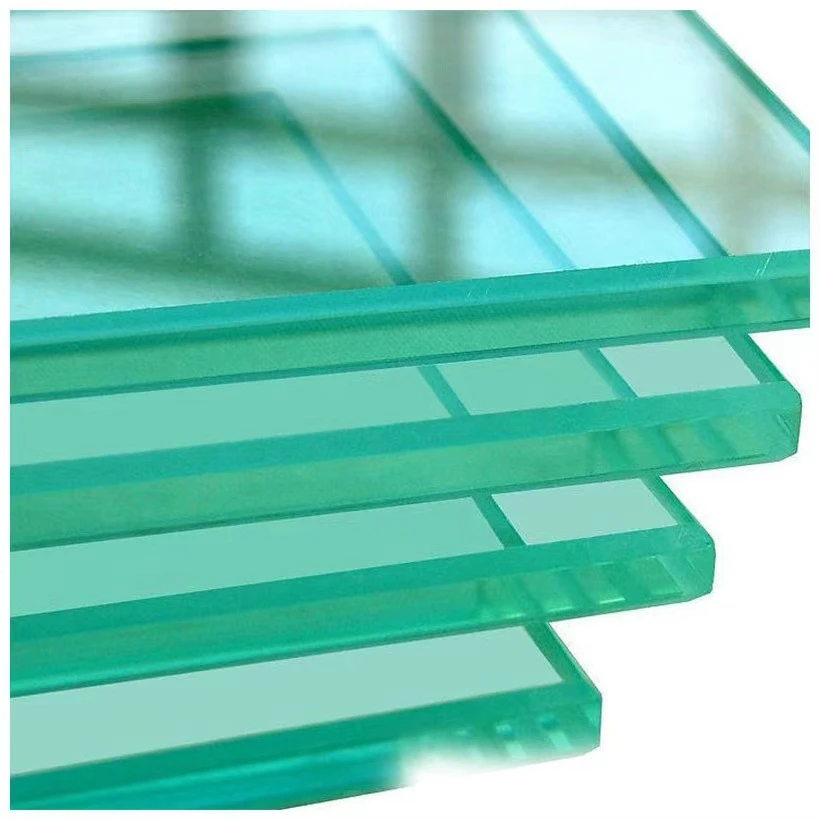When considering the price of 6mm tempered glass, it's essential to delve into the nuances of quality, applications, and factors influencing cost. Tempered glass, often heralded for its strength and safety features, is a cornerstone in industries ranging from architecture to automotive manufacturing. Its price is not just a numerical figure but a reflection of its extensive benefits and specialized production processes.

Tempered glass is fundamentally four to five times stronger than standard glass due to its unique thermal treatment process. During manufacturing, glass is heated to over 600 degrees Celsius and then rapidly cooled. This procedure not only enhances its sheer strength but also ensures that, when broken, it shatters into small, blunt pieces, reducing the risk of injury. This safety feature makes it ideal for environments where human interaction is frequent, such as office buildings, home interiors, and public spaces.
The pricing of 6mm tempered glass can vary significantly based on several factors. One of the primary determinants is the raw material cost. As glass production heavily relies on raw materials such as silica sand, soda ash, and limestone, fluctuations in these markets can directly impact the final price. Additionally, the energy-intensive nature of the tempering process means that variations in energy costs also play a significant role.

Another key consideration is the customization involved. Thickness aside, tempered glass may come with various additional features that affect its price. These features can include UV coatings, anti-glare properties, frosted finishes, or specific tinting to suit aesthetic or functional needs. Such embellishments, while enhancing the glass's utility and appeal, can also increase costs due to more intricate manufacturing requirements.
From an industry standpoint, suppliers often offer differential pricing based on quantity and scale. Large-scale buyers, such as construction firms or retailers, are likely to procure glass at a lower unit price due to their bulk purchasing power. In contrast, smaller or bespoke orders may incur higher costs due to less favorable economies of scale.
Geographic location is another factor. Where the glass is produced or supplied from can determine transportation costs and, consequently, the price. Regions with a robust manufacturing base and easy access to raw materials might offer more competitive pricing than those relying heavily on imports.
6mm tempered glass price
When evaluating suppliers, one should assess both price and the inherent value being offered. It's crucial to consider the supplier's reputation, the consistency in glass quality, customer service, and post-sale support. Reliable suppliers will often have certifications and adhere to international safety standards, ensuring that the tempered glass meets the necessary regulatory requirements.
For the discerning buyer, understanding these dynamics aids in comprehending not just cost but the investment made in durable, safe, and aesthetically pleasing glass products. Marketers and SEO professionals targeting this market should focus content strategies around these expert insights, ensuring potential buyers are well-informed. Engaging content that articulates the tempering process, uses case studies or real-life examples, and provides comparative analyses can help in establishing authority and trustworthiness in this niche.
Furthermore, it is beneficial to integrate customer testimonials and expert reviews into content. First-hand experiences offer prospective buyers a clearer understanding of product performance and supplier reliability, thus reinforcing trust.
Lastly, transparency in communication, offering detailed insights into how prices are set and what higher costs bring in terms of quality and safety, can fortify market positioning. In a digital age where consumer trust is paramount, content that exhibits transparency and expertise can significantly elevate brand standing and encourage informed decision-making.
In conclusion, while the price of 6mm tempered glass is influenced by numerous factors, understanding and conveying these in depth through SEO-rich content aids in capturing the interest and trust of target audiences. By emphasizing expertise, reliability, and authentic experiences, brands can achieve enhanced engagement and conversion in the digital landscape.
 Afrikaans
Afrikaans  Albanian
Albanian  Amharic
Amharic  Arabic
Arabic  Armenian
Armenian  Azerbaijani
Azerbaijani  Basque
Basque  Belarusian
Belarusian  Bengali
Bengali  Bosnian
Bosnian  Bulgarian
Bulgarian  Catalan
Catalan  Cebuano
Cebuano  Corsican
Corsican  Croatian
Croatian  Czech
Czech  Danish
Danish  Dutch
Dutch  English
English  Esperanto
Esperanto  Estonian
Estonian  Finnish
Finnish  French
French  Frisian
Frisian  Galician
Galician  Georgian
Georgian  German
German  Greek
Greek  Gujarati
Gujarati  Haitian Creole
Haitian Creole  hausa
hausa  hawaiian
hawaiian  Hebrew
Hebrew  Hindi
Hindi  Miao
Miao  Hungarian
Hungarian  Icelandic
Icelandic  igbo
igbo  Indonesian
Indonesian  irish
irish  Italian
Italian  Japanese
Japanese  Javanese
Javanese  Kannada
Kannada  kazakh
kazakh  Khmer
Khmer  Rwandese
Rwandese  Korean
Korean  Kurdish
Kurdish  Kyrgyz
Kyrgyz  Lao
Lao  Latin
Latin  Latvian
Latvian  Lithuanian
Lithuanian  Luxembourgish
Luxembourgish  Macedonian
Macedonian  Malgashi
Malgashi  Malay
Malay  Malayalam
Malayalam  Maltese
Maltese  Maori
Maori  Marathi
Marathi  Mongolian
Mongolian  Myanmar
Myanmar  Nepali
Nepali  Norwegian
Norwegian  Norwegian
Norwegian  Occitan
Occitan  Pashto
Pashto  Persian
Persian  Polish
Polish  Portuguese
Portuguese  Punjabi
Punjabi  Romanian
Romanian  Russian
Russian  Samoan
Samoan  Scottish Gaelic
Scottish Gaelic  Serbian
Serbian  Sesotho
Sesotho  Shona
Shona  Sindhi
Sindhi  Sinhala
Sinhala  Slovak
Slovak  Slovenian
Slovenian  Somali
Somali  Spanish
Spanish  Sundanese
Sundanese  Swahili
Swahili  Swedish
Swedish  Tagalog
Tagalog  Tajik
Tajik  Tamil
Tamil  Tatar
Tatar  Telugu
Telugu  Thai
Thai  Turkish
Turkish  Turkmen
Turkmen  Ukrainian
Ukrainian  Urdu
Urdu  Uighur
Uighur  Uzbek
Uzbek  Vietnamese
Vietnamese  Welsh
Welsh  Bantu
Bantu  Yiddish
Yiddish  Yoruba
Yoruba  Zulu
Zulu 


